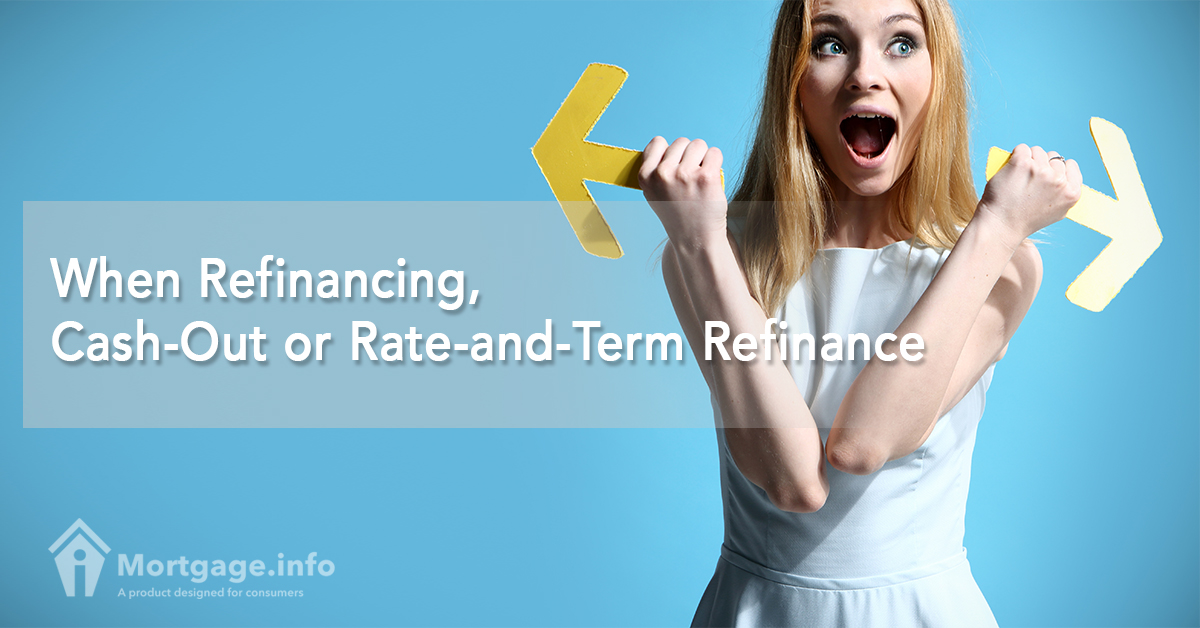
It’s refinancing season! Mortgage refinance gives homeowners a great opportunity to lock in lower rates and hopefully find better mortgage deals to suit their present circumstances. While it has many versions, rate and term refinance and cash-out refinance are two of the most common, if not popular, options. In what terms are they similar or different, let’s find out below.
By Definition
As straightforward as it gets, a rate and term refinance is about replacing your older mortgage with a new loan for a lower rate and a better term. The loan amount remains the same, that’s why it’s called a cashless or non-cash refinance.
However, if you want to refinance to a larger loan, you are aiming for a cash-out transaction. It’s effectively converting your home’s equity into cash, pocketing the difference between the old loan balance and the new loan proceeds. If you are aged 62 and older, reverse mortgages are another way to tap your home’s equity and turn into cash.
By Purpose
A rate and term refinance works well in today’s environment of low rates. It is only right that you make the most of these lower rates while they last. It could also be time to shift to a more manageable mortgage repayment schedule.
In the case of adjustable-rate mortgages (ARMs), they are subject to rate adjustments that may push payments to go up. To avoid this scenario, some homeowners opt to refinance to a fixed-rate loan with a longer term and rate.
With cash-out loan transactions, you refinance to obtain a lower rate and cash in mind. The cash is used for a myriad of purposes:
- to pay off debts, e.g. credit card. Interestingly, when you are able to make full payment on your revolving credit card, it lowers your credit utilization ratio and improves your credit score.
- to pay college tuition fees/expenses
- to make home improvements or property purchases
- to fund trips and vacations
- for emergency and other cash needs
By Terms
Ideally, you’d refinance to make things better. Here’s a handful of things to look out for:
Closing costs: Both incur a new set of closing costs related to the new mortgage. You can pay the closing costs from the proceeds of the cash-out loan. With rate and term refinance, you may finance your closing costs together with the new loan.
Cash: Under cash-out refinance, you’d receive a lump sum on the loan’s closing date. The loan proceeds are used in this order: payment of the old mortgage as well as the closing costs and prepaid items. Whatever’s left is yours to keep.
Interest rate: Both offer a fixed rate or adjustable rate. A cash-out refinance may mean a higher rate than a rate and term refinance because of the higher amount you loaned.
LTV: Loan-to-value ratio matters in refinance transactions even with a not-so-good credit. To do a cash-out transaction, LTV limits for cash-out refinances are around 75% to 90% of the home’s equity. For example, FHA loans have an 85% LTV limit. To ensure that there is enough equity for refinancing, some lenders require homeowners to wait at least 12 months until they take cash out of their house, figuratively.
There is no formula on which of the two refinancing paths you’d like to take. As they say, when rates are dropping, go for a rate and term refinance. If home prices are appreciating, opt for a cash-out refinance. You should go over your options carefully and think things through.
